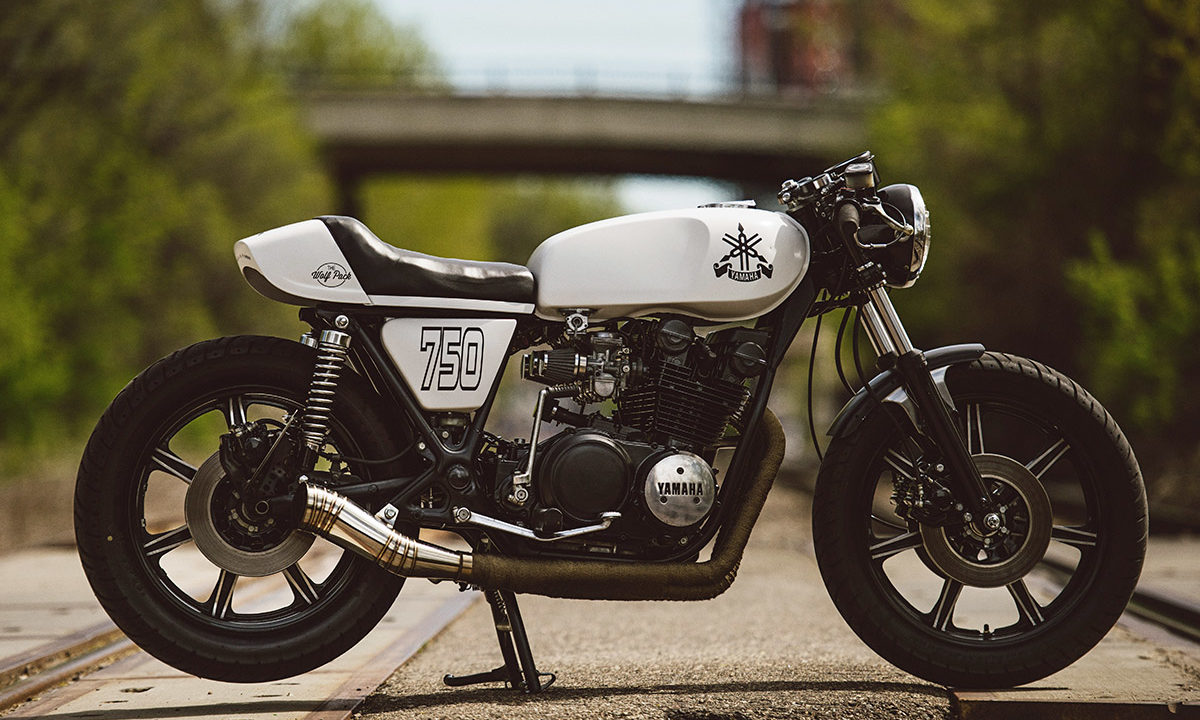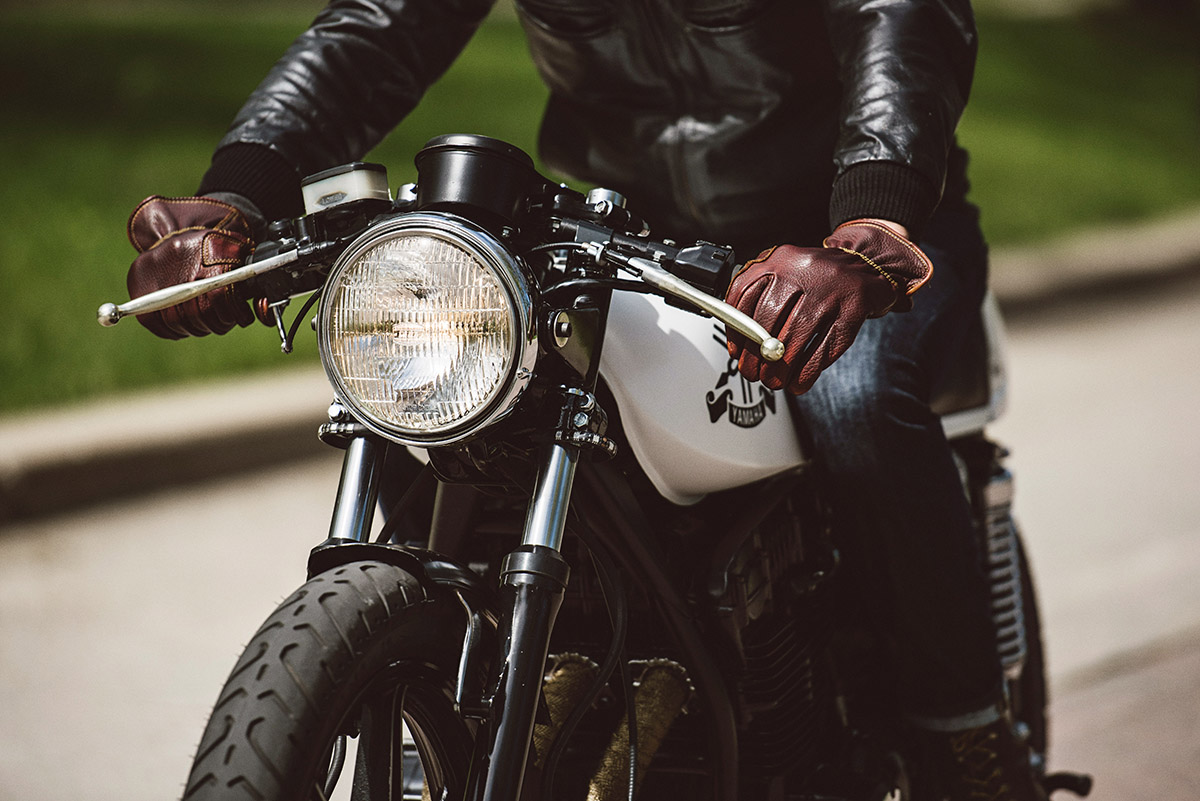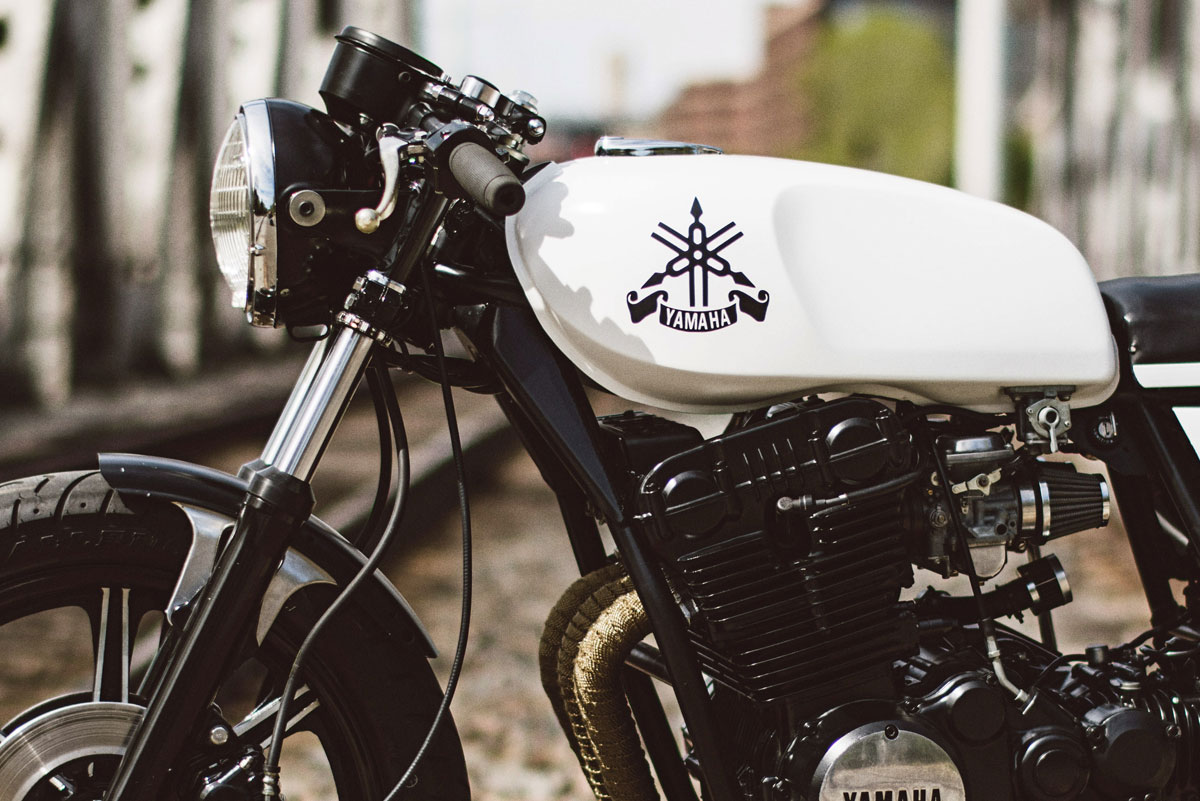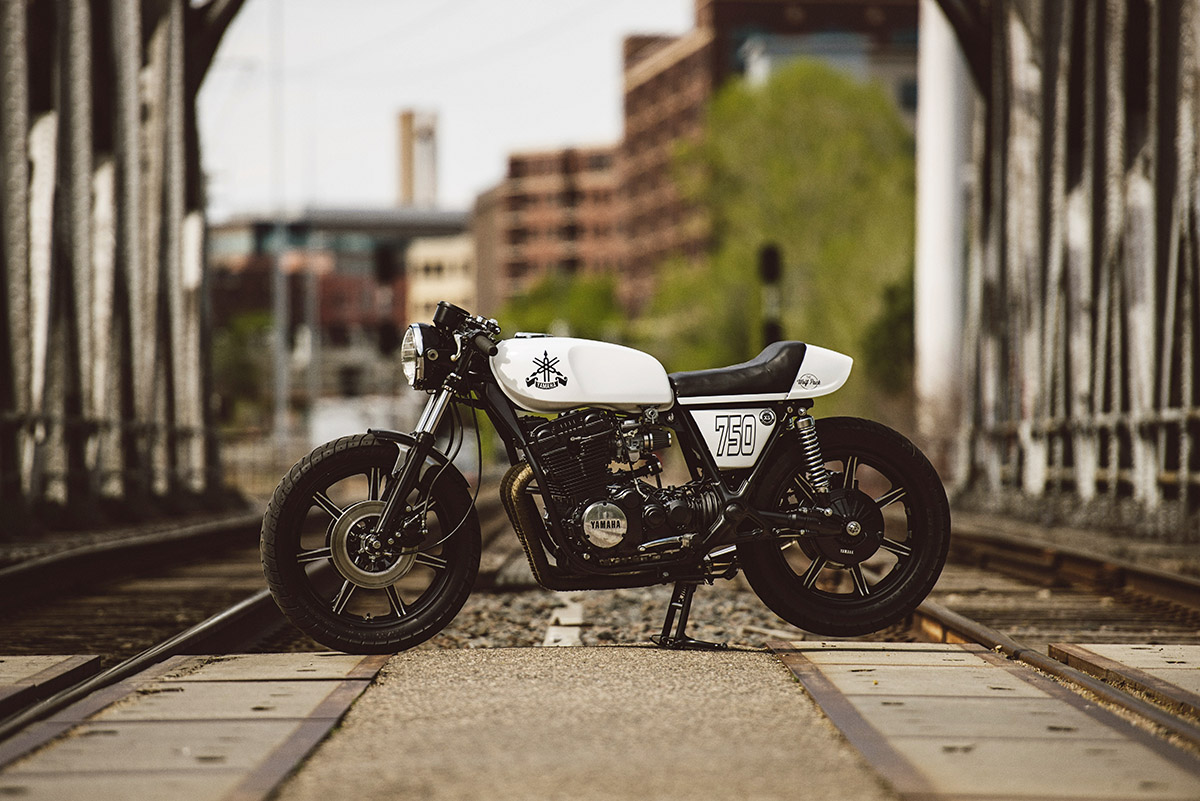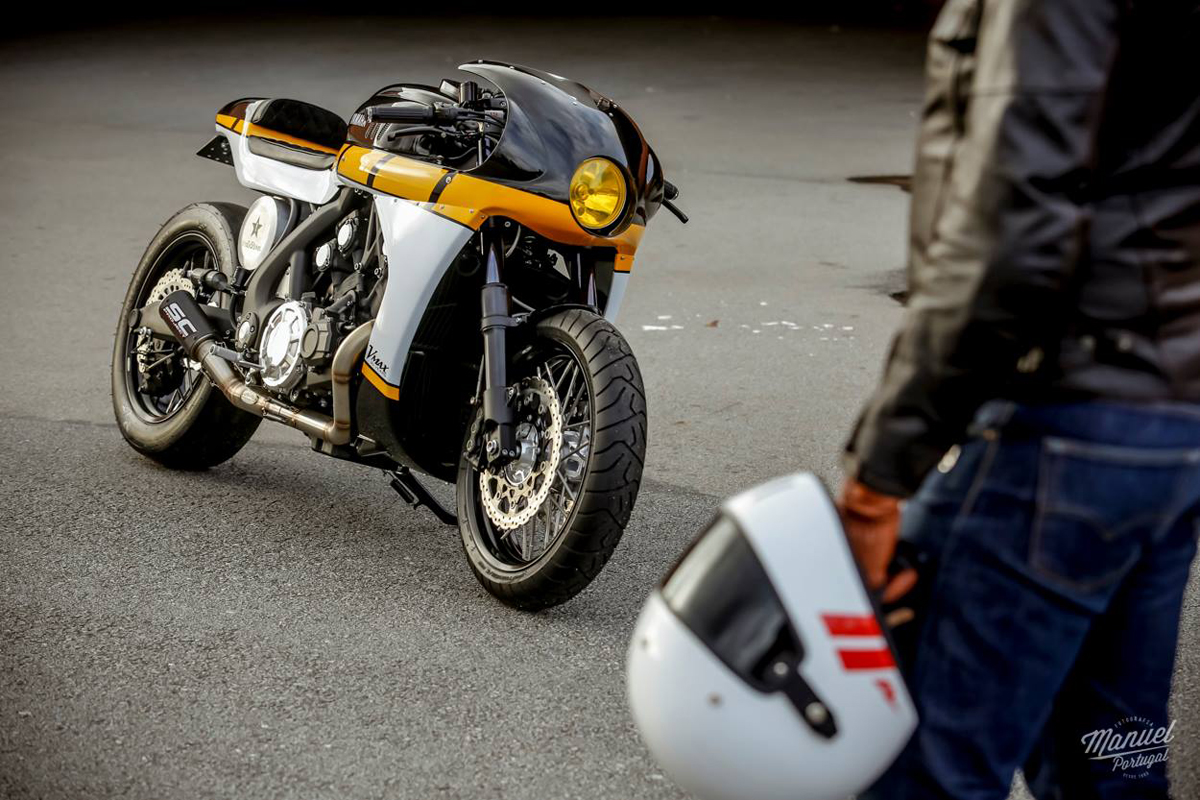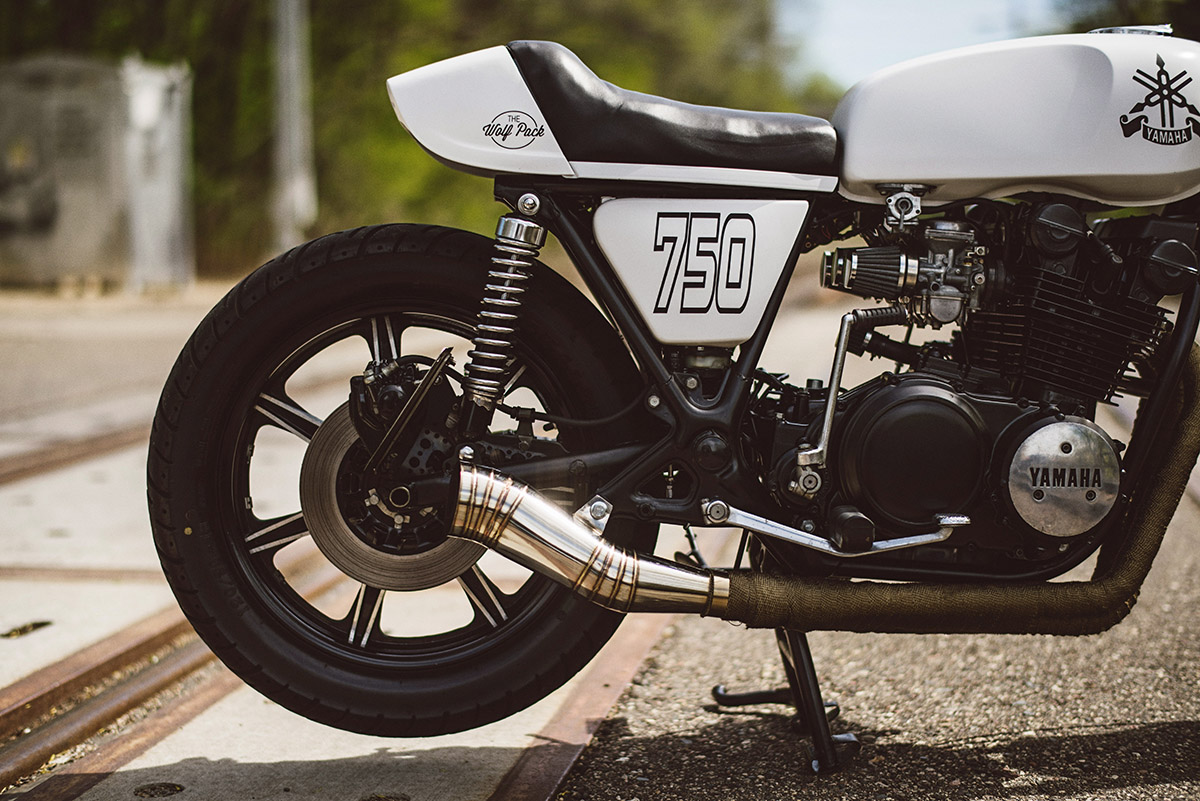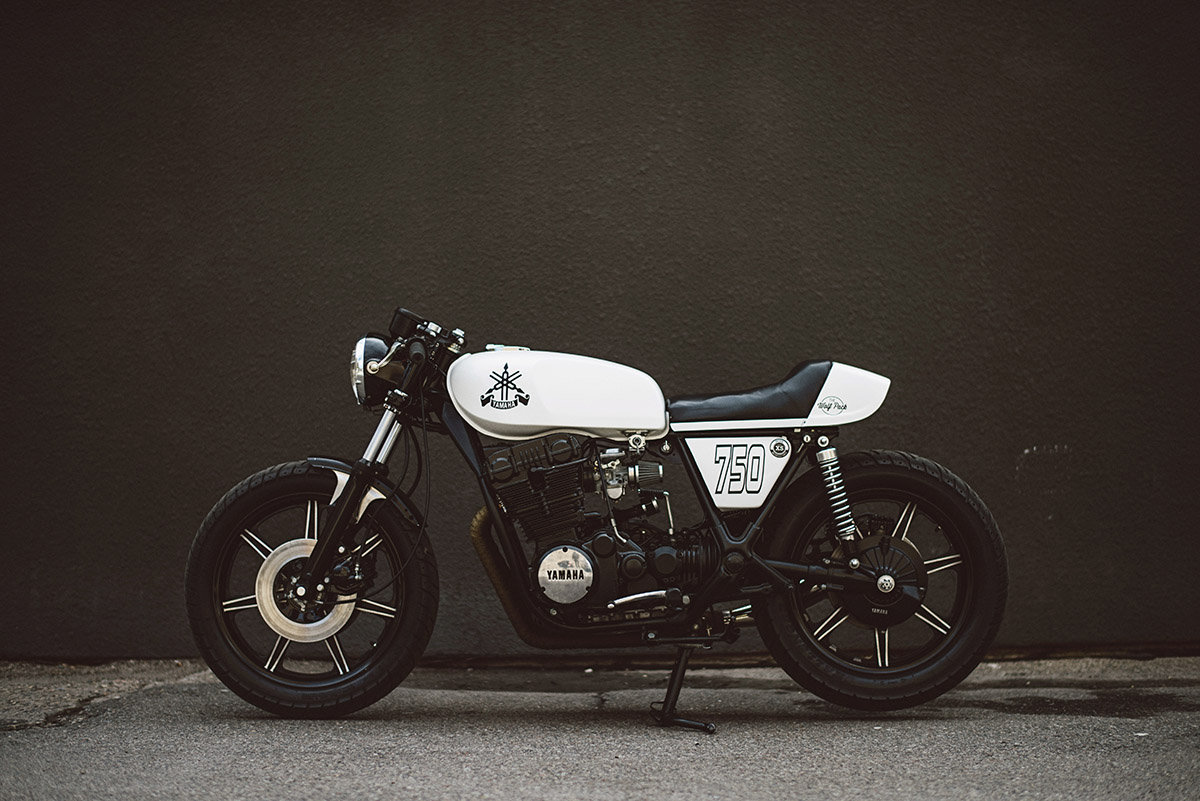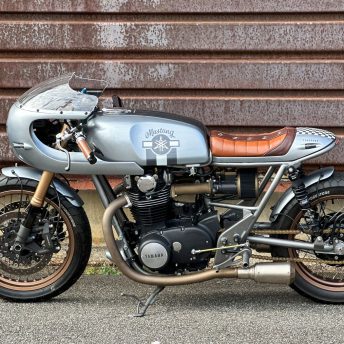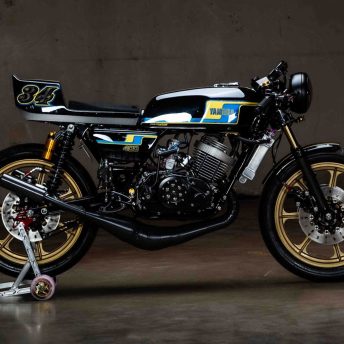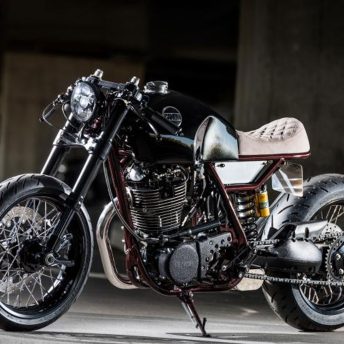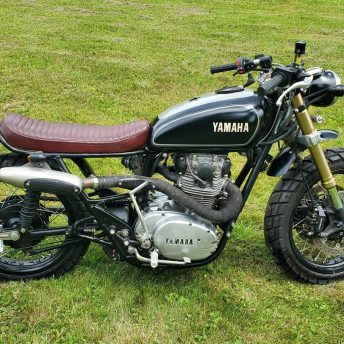Jesse attributes his interest in building bikes to a 1971 Honda CB175 he restored with his father at the age of 15. After being exposed to the cafe racer scene a few years ago it’s influenced everything he has built since and the Oxford is his latest accomplishment. “Most of the work on this project took place in my friend’s small, uninsulated 1 stall garage,” says Jesse. “It gets pretty cold here in Minnesota, but we made it through with a little help from a $35 kerosene heater.”
“The Oxford is a 1977 Yamaha XS750 D2. I picked it up really cheap and initially I thought that I’d get it running and flip it. But the more I worked on it the more I realised that it was a great platform for a cafe and I just had to build it.”
During a lunch break at work, Jesse discovered the project donor on Craigslist. It ad stated “Clean, hasn’t run in a few years” so he made a quick call. After learning other were interested in the bike he skipped worked and headed to the owner’s place. “It was covered in a layer of dust and grime and it had a mouse nest in the battery box, but everything was there.” Jesse recalls “I asked him how long it had been since he last rode it and he replied, ‘It’s been a few years…what do the tabs say?’ I took a look and realised the tabs were last renewed in ’92! I told him that his bike has been sitting in his garage since I was born. To which he replied, ‘Oh, I guess it’s been a while then!’ and we had a good laugh about it.” As it turned out the seller was the original owner and still had all the paperwork to show a meticulous record of maintenance so the pair shook hands and the deal was sealed with $400 cash.
For the design of the Oxford Jesse trawled the internet for inspiration staring at hundreds of custom XS750s and 850s. Pen in hand he sketched concepts until he was satisfied he’d put together the final blueprint for his build. It was a design that he felt respected Yamaha’s original vision for the XS while adding a racier aesthetic with some modern touches.
From the beginning, Jesse planned to retain or repurpose as many of the original parts as possible, but being a stripped back cafe racer meant many components would never find their way back onto the bike. The original rear fender and taillight were the first to go, followed closely by 6 inches of the rear subframe. He trimmed the rear cowl so it could sit forward on the frame where it would align with the lines the frame. Knowing the airbox was also on the list of things to be removed he then trimmed the side panels to sit within the frame tubes.
Before the complete teardown, Jesse made sure the engine, that had been hibernating for the past 25 years, would start. After replacing the fluids, rebuilding the carbs, checking the valves and adjusting the points the triple fired into life. “I didn’t focus on a lot of performance upgrades,” Jesse explains. “I simply swapped out the airbox with pod filters and re-jetted the carbs to accommodate.” Then after some less than flattering feedback from his riding buddies, the huge stock exhaust was replaced by a svelte 3-into-1 system wearing a polished, pie cut aftermarket muffler.
With the bike now in pieces, work began on the individual elements. Jesse cleverly drilled his trimmed rear cowl to allow the fitment of a series of LEDs that function as brake and indicators lights. The front forks were shaved to lower the front end and level out the bike’s stance and Progressive fork springs installed. The front fender was heavily chopped to suit the bikes tight proportions and its headlight dropped to sit level with the top of the fuel tank. Clip on bars wearing Biltwell Recoil grips clamp the fork tubes and the instrument cluster was reduced a single speedometer and minimal warning lights. Using existing holes on the stock triple clamp Jesse designed and plasma cut a custom bracket to mount the stock dial unobtrusively between the bars, a modification that remains one of his favourite features of the build. To keep the front end clean the ignition now lives at the rear of the tank.
When it came to choosing the paint Jesse settled on a tried and tested, black and white scheme using a satin version of Ford’s ‘Performance White’ as a basis. As the saying goes ‘it’s not what you know but who you know’ and it was Jesse’s father-in-law that the applied the flawless finish, complete with decals supplied by his buddy Ray at Team Ecotech in Minnesota. While the bodywork was drying Jesse sprayed the cast wheels himself leaving the twin stripes raw and for rubber, he fit Kenda Challenger sport touring tyres. To ensure the finished bike was befitting of its Oxford moniker he then repainted or polished every original component before the final rebuild.
Photography by Lucas Botz
